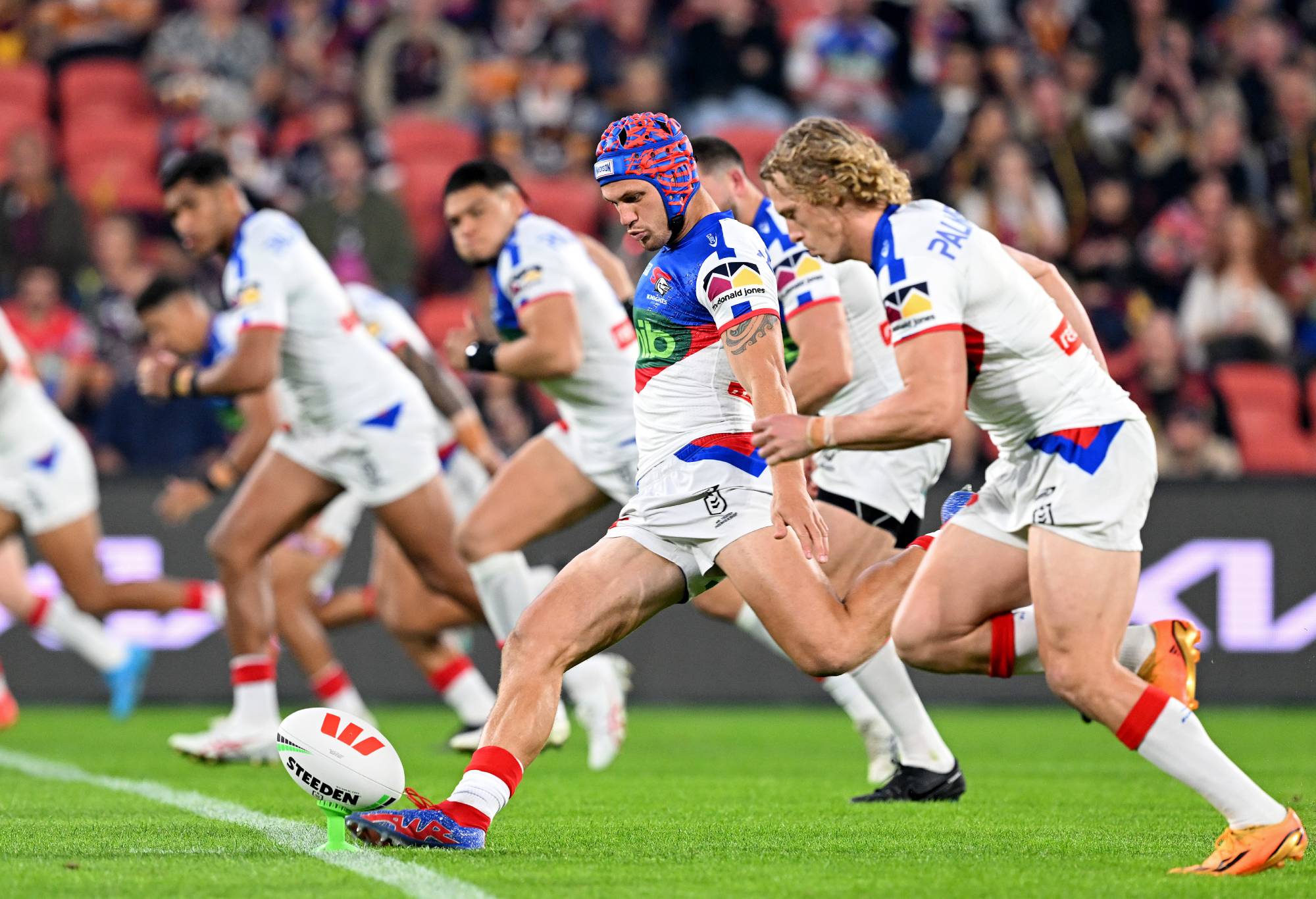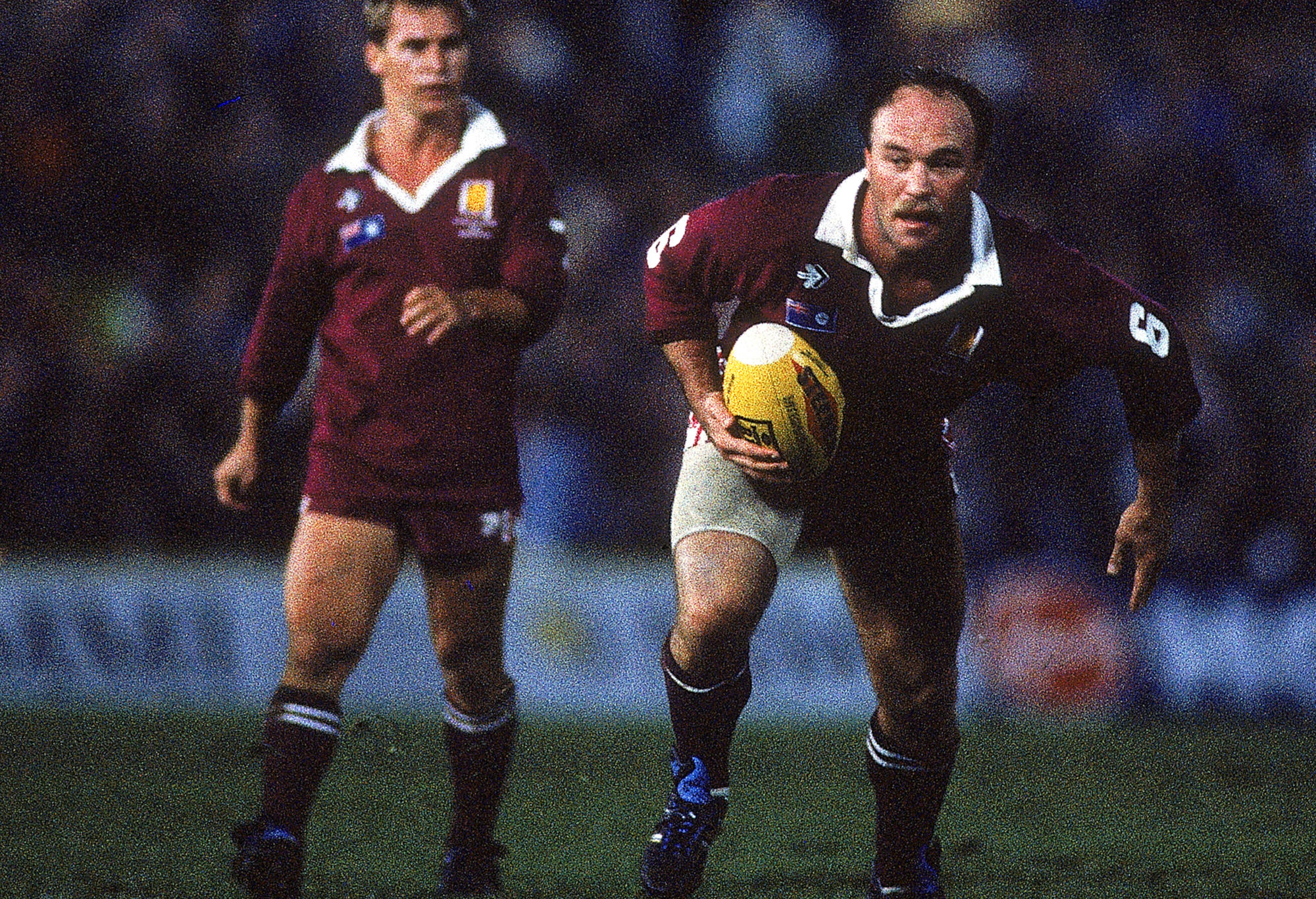If you believe England’s cricketers, Bazball has revolutionised their sport within the space of a year.
Rugby league is an evolutionary game which has rarely changed in a sudden way over the decades.
One change which took aeons to take hold but seems to be par for the course is the short kick-off, whether from halfway or a line drop-out.
The Walker brothers, Shane and Ben, made it fashionable at Queensland Cup level a few years ago before it became widespread in the NRL in recent seasons.
NRL coaches had previously thought it was too much of a gamble because the risk of giving up field position outweighed the chance of regaining possession.
Thankfully, the perceived wisdom has changed and the proliferation of short restarts has added an extra layer of unpredictability to NRL contests, like scrums used to do if you ask anyone over 70 who remembers when they were not a fait accompli.
With the threat of potential class action from players towards the NRL over concussion in the future, it wouldn’t surprise if at some stage in the not too distant future the sport’s rulemakers followed the NFL’s path by removing the incentive for long kick-offs.
In 2019 the NFL changed its kickoff rules to discourage teams from booting kick-offs deep because the further the ball went, the greater the impact in the tackles, and likelihood of concussion, when the receiver hurtled back into the oncoming defence.
If they had seen the Mark Carroll on Paul Harragon kick-off incident from 1995 in Newcastle, they might have made the move sooner.
The NFL has tightened its regulations even further for next season so that if a player catches a kick-off behind their 25-yard line, their team can spot the ball.
A rugby league equivalent would be to reward any kick-off catch behind the 20-metre line to result in a restart – that would remove the motivation for teams to kick long and encourage a high looping short drop to create an aerial contest for possession.
It’s still mystifying that many traditionalists kick up a stink about rugby league, or any contact sport for that matter, making changes to the rules to minimise the possibility of head injuries.
Putting aside the myriad legal issues, administrators should already have an intrinsic duty of care to protect the players first and the game’s traditions second.
Old players – both professional and amateur – offer a wry smile when they mention they’ve got a dodgy shoulder, wonky hamstring or dicky knee from their sporting careers.
There’s never any argument that those body parts are not what they once were due to wear and tear from playing sport but when the topic of head injuries in later life is raised, you have to be a brain surgeon to convince some people of the link between repeated concussions and neurological problems.

Kalyn Ponga kicks off for the Newcastle Knights. (Photo by Bradley Kanaris/Getty Images)
And even then that is not enough of a qualification.
Granted, people who have never played contact sport suffer from all sorts of neurological conditions in later life.
And the recent publicity surrounding old footballers suffering a higher rate of these problems is not necessarily new, it’s just now that medical science and awareness of the causal link is so much higher, so it would be extremely ignorant to apply old-school standards when modern knowledge is so much more advanced.
The NRL, while emphasising it is not going to have a crackdown per se on any given round, is continuing to punish contact with the head, both careless and reckless, with sin bins, send-offs, fines and suspensions.
It is clear from the attitude of players that the vast majority are on board with both the sanctions for high contact, aside from a few complaints here and there, mainly from the usual suspects who sail close to the wind/head with their tackling techniques.
And players also now seem to accept the stricter measures for checking on potential concussions from the independent doctor in the bunker.
When the assessment process was changed to a remote model at the start of last year there was an outcry from players as they were marched off against their will as well as from coaches, commentators and fans about the NRL being too cautious.

(Photo by Hannah Peters/Getty Images)
There should be no such thing as being too cautious when it comes to the possibility of anyone having a brain injury that goes unchecked.
Now it’s a way of life in the NRL and with stories such as Immortal five-eighth Wally Lewis’ diagnosis of CTE increasingly ringing alarm bells in players past and present, there will be and should be much less opposition to any new measures that are brought in to reduce the risk of head injuries in players from the top level to the junior ranks.
Unfortunately there is still opposition to the push to reduce tackling at the youngest age-groups with the Sydney Morning Herald recently revealing that there has been significant pushback to NRL/NSWRL recommendations for players not to be able to play under tackle rules until midway through their under-7 season.
It’s got to the point where a rebel junior league body is growing rapidly due to parents being unhappy with the tackling rules and the plan to phase out competitive matches for under 13s and younger by 2027.

Wally Lewis (Photo by Tony Feder/Getty Images)
Some people will cling onto the past no matter what, claiming that because they played under tackle rules when they were a kid that it should always be the way.
The junior reforms have already been delayed a year in Sydney’s many associations because of clubs arcing up about them.
Administrators need to stick to their guns to make the right choice rather than one that will appease traditionalists.
The more contact sports move with the times with proactive rule changes in the age of concussion awareness, the greater chance they’ll have to survive.































































































